Review and photos by OkapiBoy
Before we leave Mainland Asia, I wanted to make one last detour and check out some of the largest and mightiest rivers in India and Asia.
The Ganges, Indus, Yangtze, and Mekong are just some of the largest river systems that flows and crisscross the continent.
Here, one would encounter one of the unlikeliest animal swimming around: dolphins.
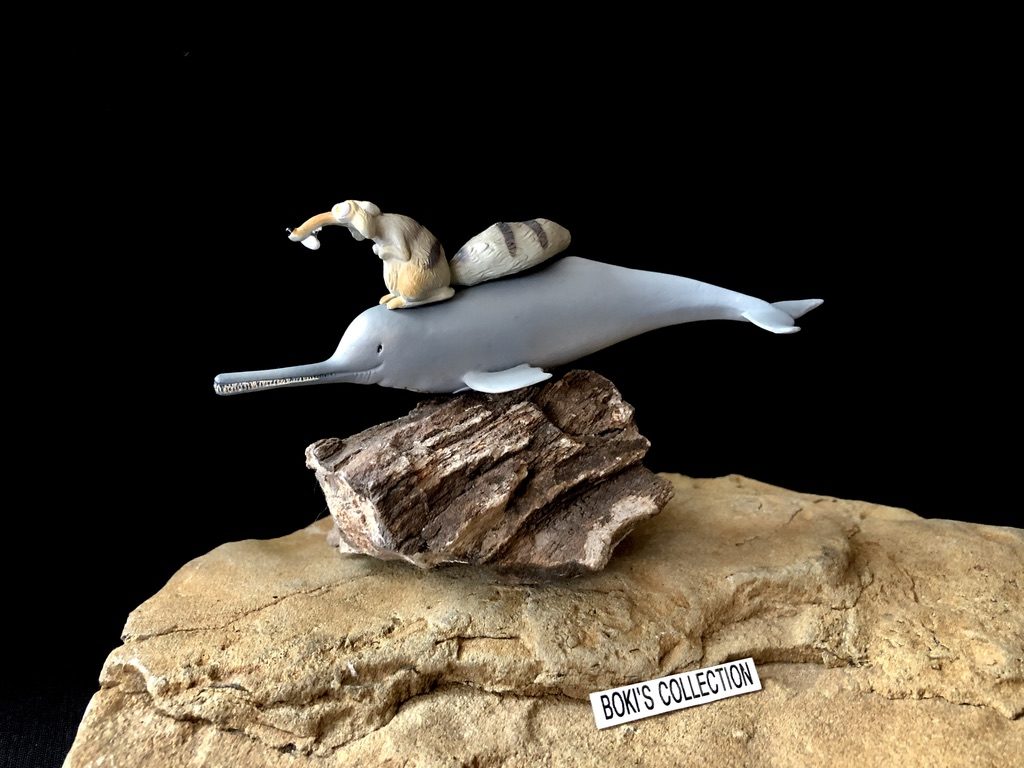
When one thinks of dolphins, the marine species comes to mind, after all they are some of the most popular animals, in the wild, aquariums and marine parks, as well as pop culture.It seems like these charismatic marine dolphins are everywhere.
But there are dolphins that live exclusively in fresh water, and today, unlike their marine cousins, there are only seven species of dolphins and porpoises left.
The subject of todays review is one of them, the Ganges River dolphin (Platanista gangetica).
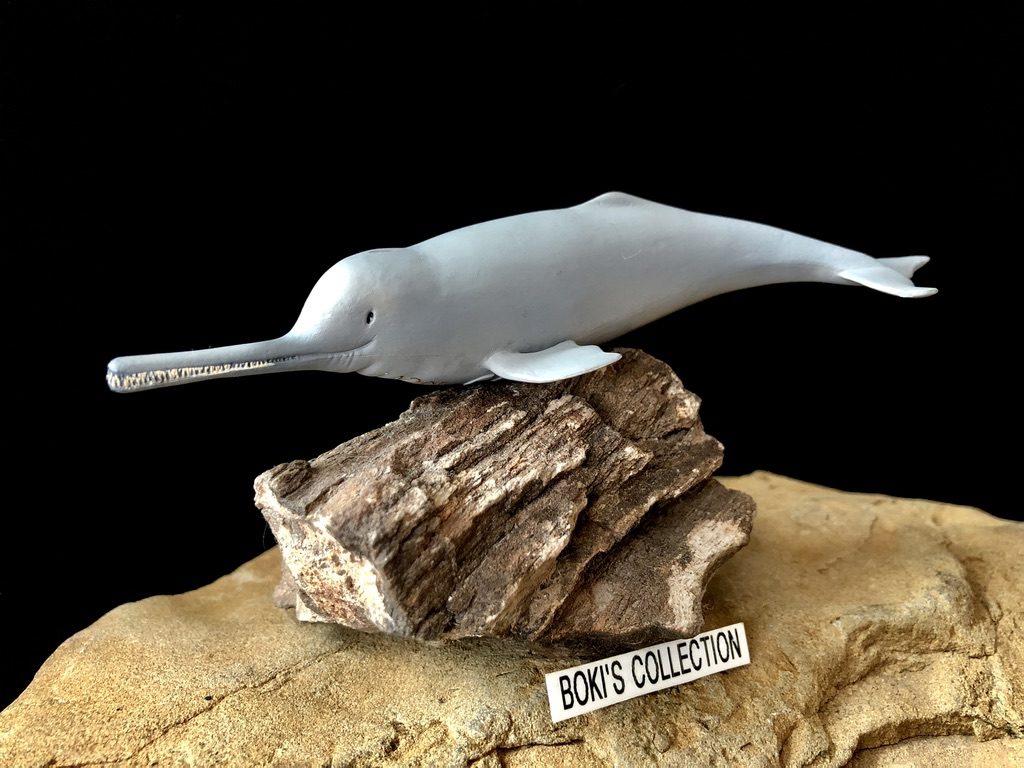
In 2013 CollectA released their version of this unique freshwater dolphin. It was the first ever figure of this species as far as I know, and to-date, the only one.
While the various species of marine dolphins have become one of the toy industries staple figure, the freshwater species is another story. Almost none of the major brands have made one, so it was exciting when CollectA finally gave us a good figure.
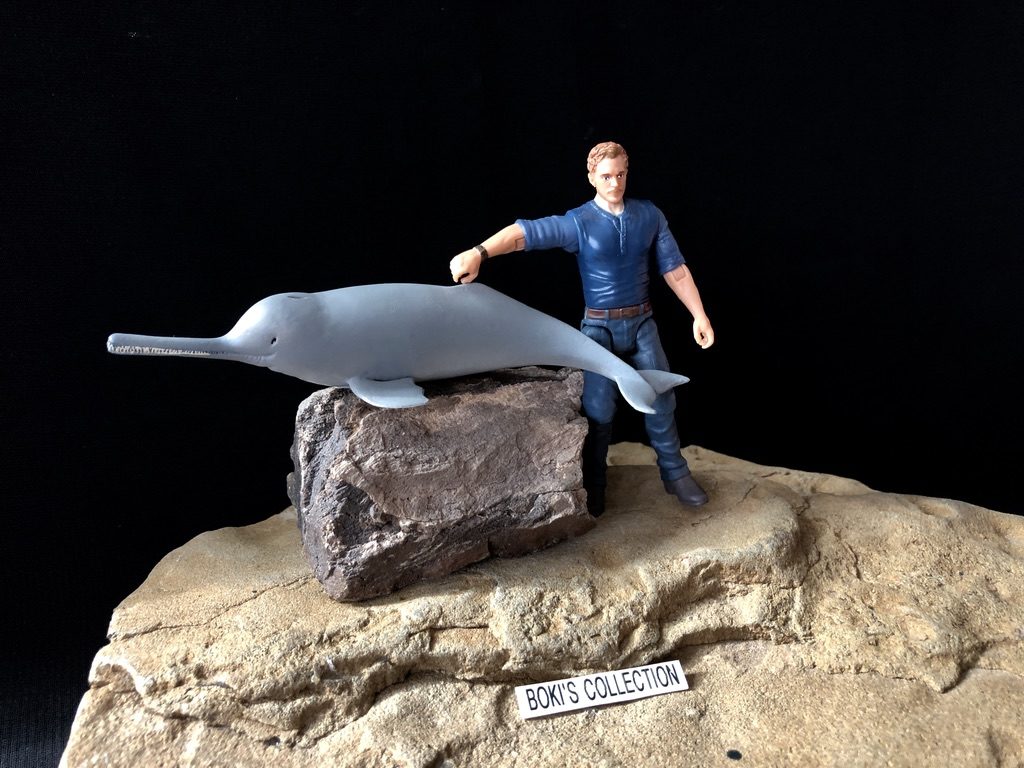
Ganges river dolphins can grow up to 7-9 feet in length and may weigh between 330 – 380 pounds when mature.
The figure measures 5.5” inches long when stretched out, so I believe it is around or close to the 1:19-1:20 scale, I could be wrong.
River dolphins looks so different from their more streamlined marine cousins that they almost look prehistoric.
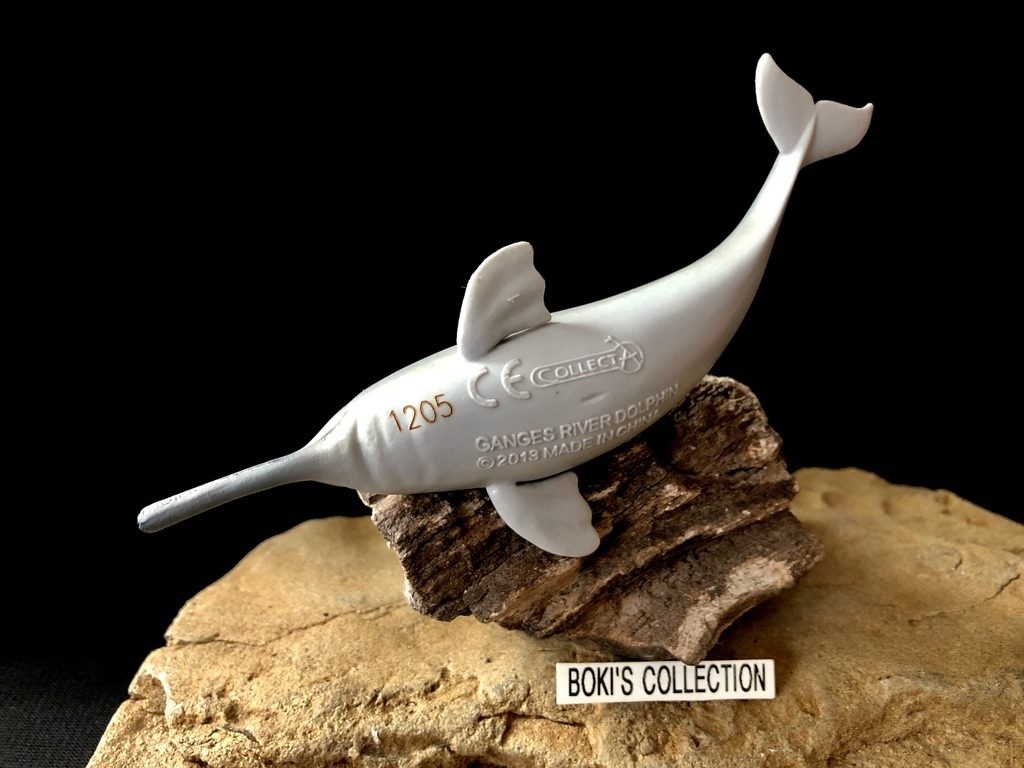
Unlike their marine cousins who relies on speed and good eyesight to be able to hunt in open ocean, River dolphins are the opposite.
Instead of clean ocean waters, the rivers the these freshwater dolphins inhabit are often silty with almost zero visibility in many parts. This low visibility environment made having a good eyesight no longer a requirement, so these dolphins evolve to have very small eyes that are so poor they are literally almost blind.
Instead, to compensate for this lack of good eyesight, these river dolphins evolve good echolocation abilities and able to navigate and hunt in these turbid condition.
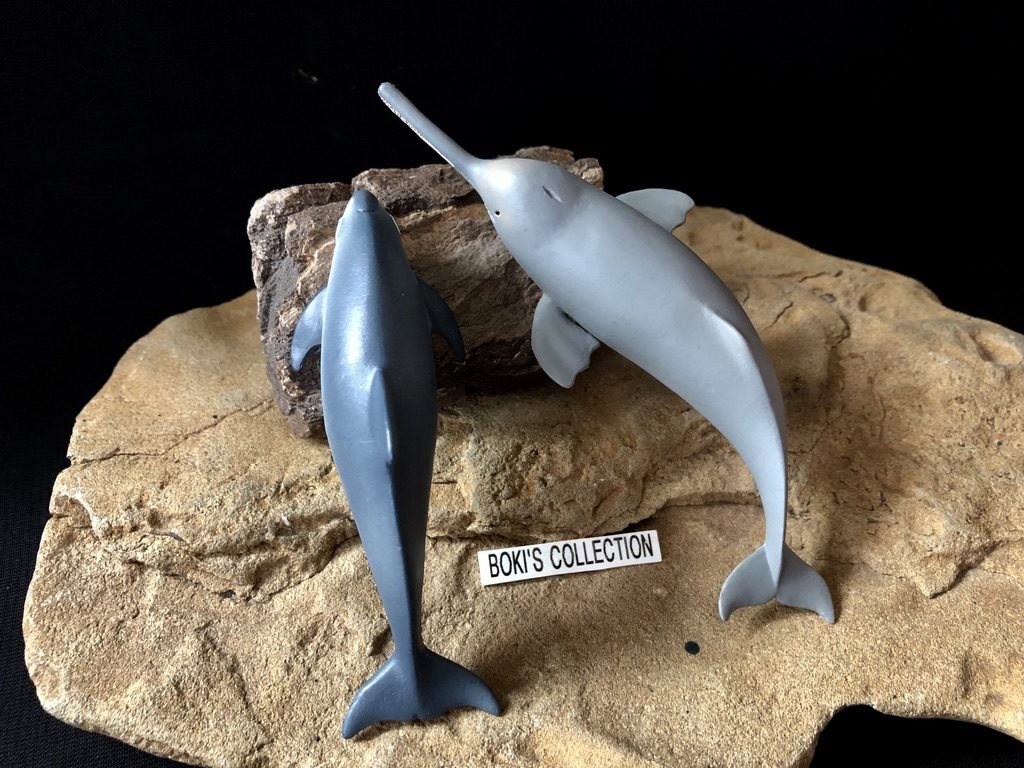
marine cousins. Their flippers are also larger and flatter and ends in a square tip unlike the pointed one on the marine species.
River dolphins also differ from their marine cousins in having a distinctive long narrow beak lined with teeth which are visible even when the mouth is closed. Their heads are also more bulbous, more dome shaped that their marine cousins.
CollectA did a good job in capturing these unique and distinctive features in their figures.
The eyes are very small, just a small black indentation. The long and narrow beak is also sculpted nicely and the correct shape and length, and you can see the very small individually sculpted teeth clearly. These teeth are painted white and are surprisingly applied cleanly with very little bleeding (at least on my figure), truly a very impressive results for such small detail.

Another big difference between the river dolphins and their marine cousins is how their flippers are shaped.
In the marine species that relies on great speed and maneuverability, these flippers are very streamlined, smooth, and ends in a pointy tip.
On the river dolphins, these flippers are large and wide and ends in a more flatter/squarish tips.
Perhaps these unusual flipper design helps them swim in an unusual way, river dolphins are unique among cetaceans in that they swim on their sides.
All of these unique characteristics are faithfully captures in this figure, even the small dorsal fin and blow hole are so spot on and very subtle.
The body is smooth as one would expect, but there are a few skins folds and wrinkles seen on the mouth area as well as the chin and flippers.
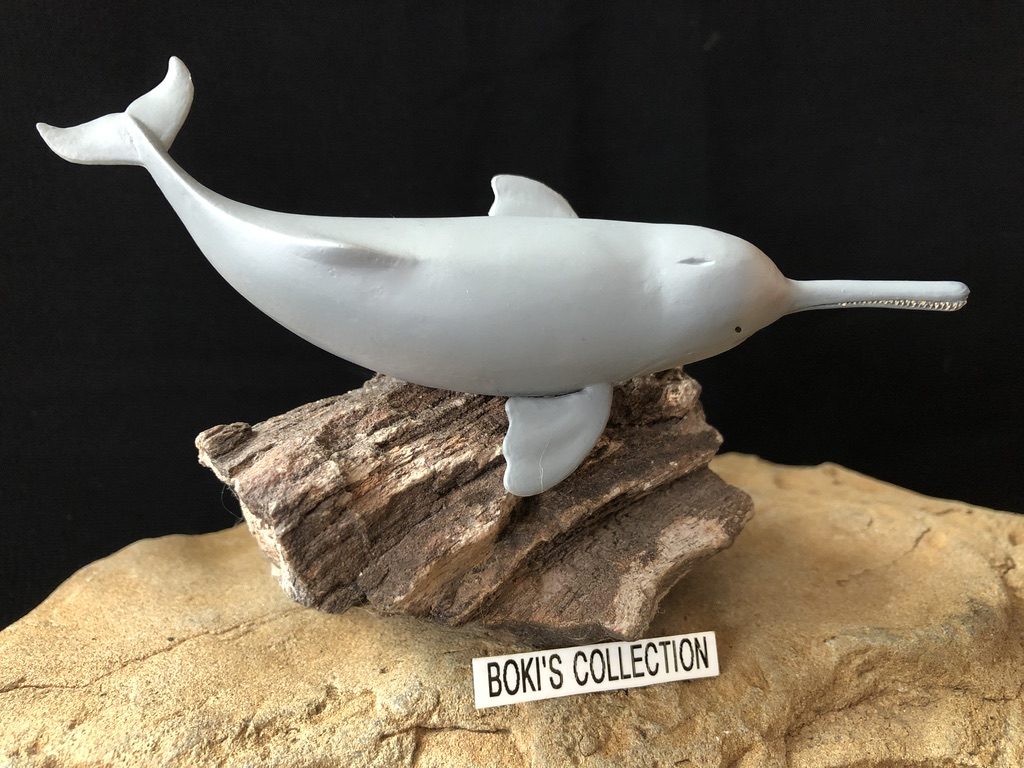
Ganges river dolphins skin coloration can be variable but are mostly dark chocolate brown, and they may take on a more grayish brown color in time.
The figure is given the more grayish brown tone, and although hard to capture in photos, in person, you can see some brown highlights on the head as well as a small transition band between the top and the more lighter colored belly area.
Color wise, not as exciting as the one we see in the marine species, but in such murky dark waters, there is no need for the Ganges river dolphin to have flashy colors.

The Ganges river dolphin is found in the Indian subcontinent’s large river system, the Ganges and Brahmaputra rivers and their tributaries.
Unfortunately, these are also some of the most polluted and threatened rivers in the world, meandering into some of the world’s most populated areas.
So it comes as no surprise that the Ganges river dolphin is endangered with less than 4,000 individuals thought to still survive in these rivers.
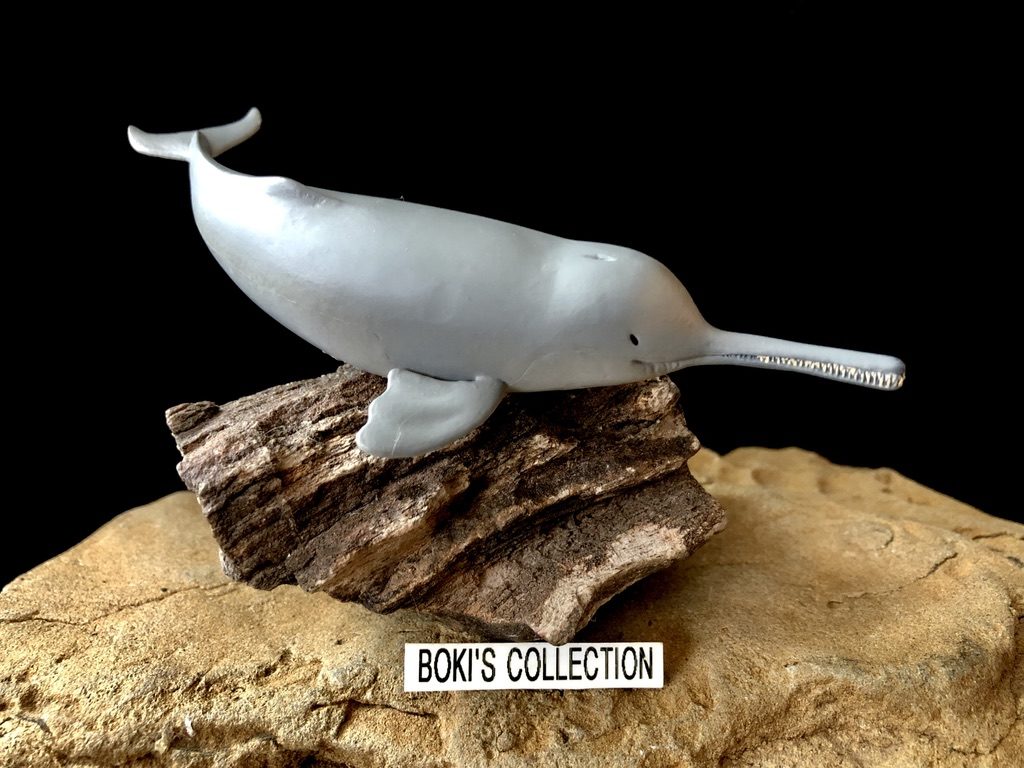
The Ganges river dolphin is in better shape than its close relative, the Indus river dolphin (P. g. minor), a subspecies of the Ganges species.
This species is now reduced to just 1,500 individuals left. It has split from its cousin thousands of years ago and lives in a restricted stretch of the Indus River in Pakistan. It now has the unenviable distinction of being the second most endangered river dolphin in the world.
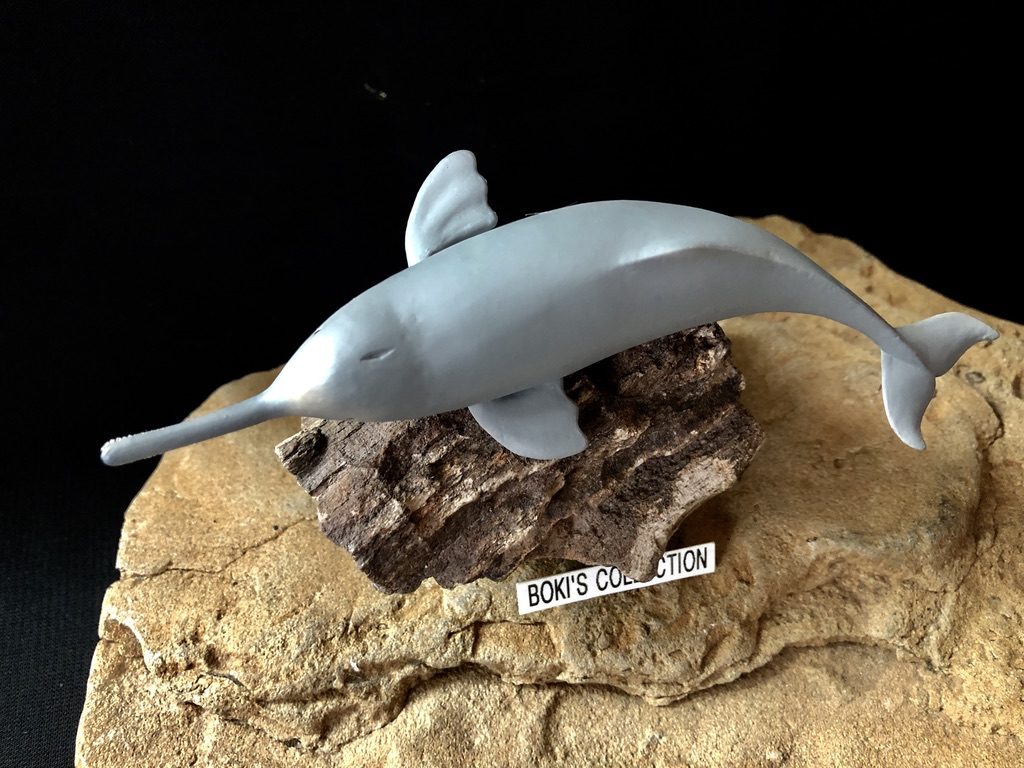
River dolphins are in serious trouble worldwide and are disappearing fast along with the mighty rivers they inhabit. Less famous than their marine cousins, their plight is not as well know, silently move closer towards extinction.
Of the seven extant species, only the Amazon river dolphin have a big enough population and large pristine habitat left that it has a more optimistic future. Its relatives in other parts of the world unfortunately don’t have that good of a future.
The Yangtze River Dolphin, once found in China’s Yangtze River is almost certainly extinct, the first of the seven to go.
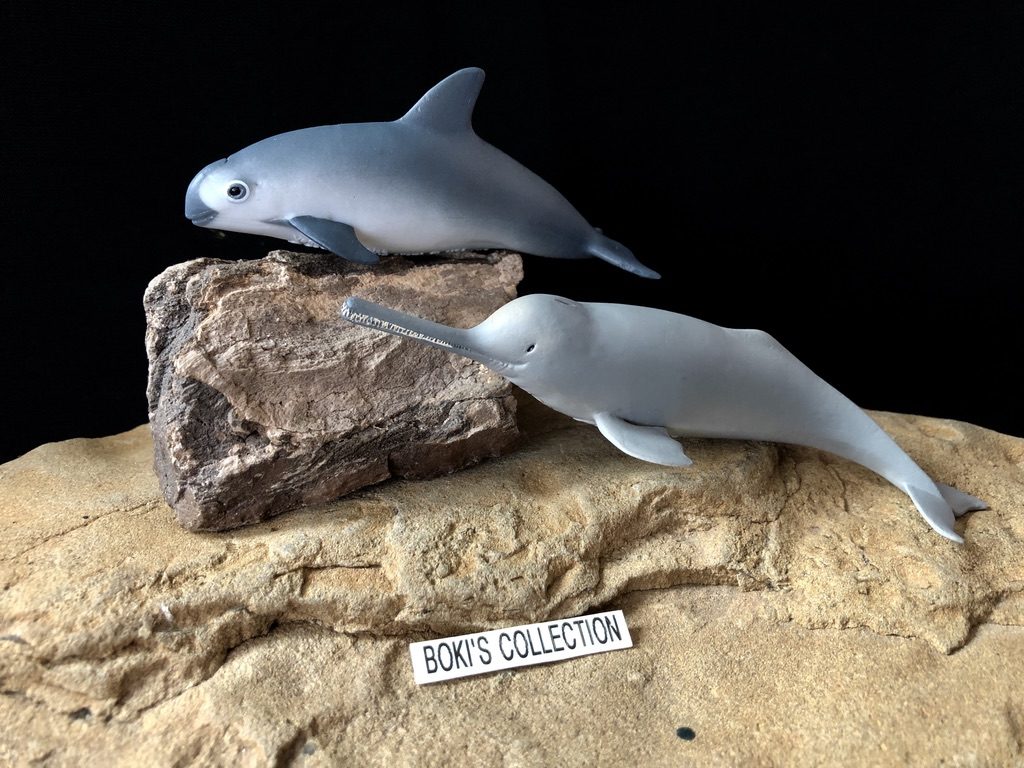
Booming human populations put heavy demand on these large river systems that these dolphins inhabits. Today, these large river systems are some of the most endangered ecosystems on earth. Pollution, fragmentation due to dams, agriculture, accidental drowning from fishing nets, all contributed to the rapid decline of all species of river dolphins.

To-date, any attempt of captive breeding have not been successful. Any hope of conserving these majestic dolphins will have to be done in-situ, a very daunting and complicated task.
There is still some time left, but serious conservation efforts must be enforced fast. It would be a devastating and sad if these enigmatic freshwater dolphins as lost forever.
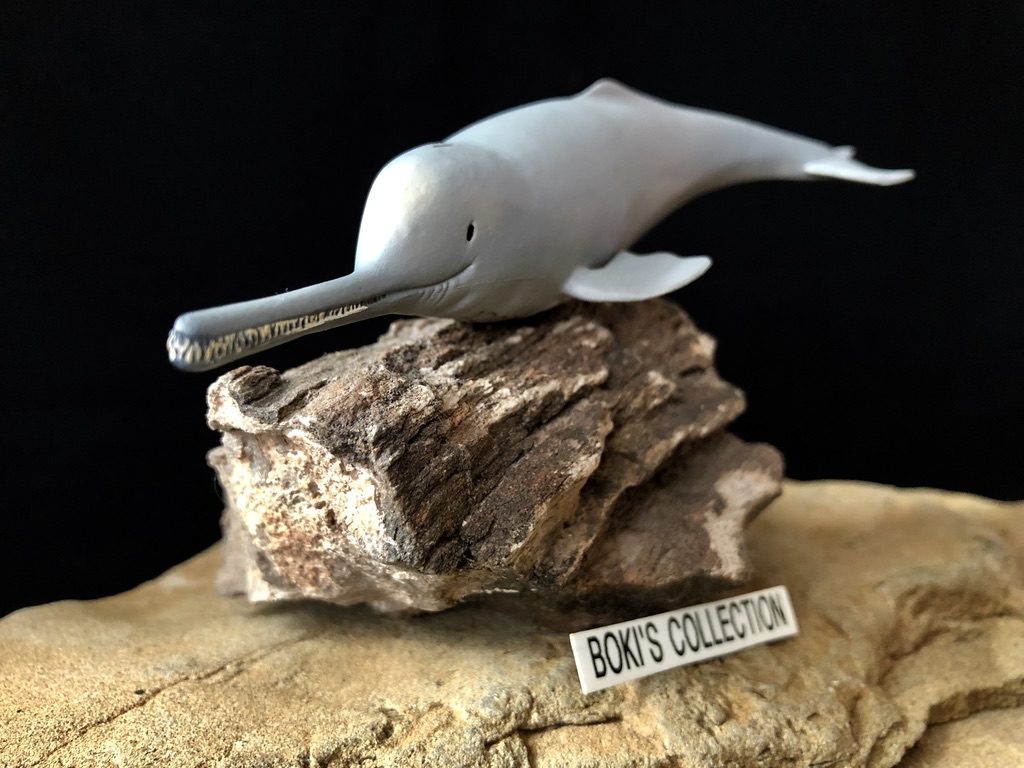
I don’t have many dolphins in my collection, in fact I only have two good size figures. I don’t collect them, but this figure is definitely something that is worth adding to any collection of extant animals. It is rare and very unusual figure with a tragic future.
I love that CollectA made one, it’s about time that attention is shifted to these animals.
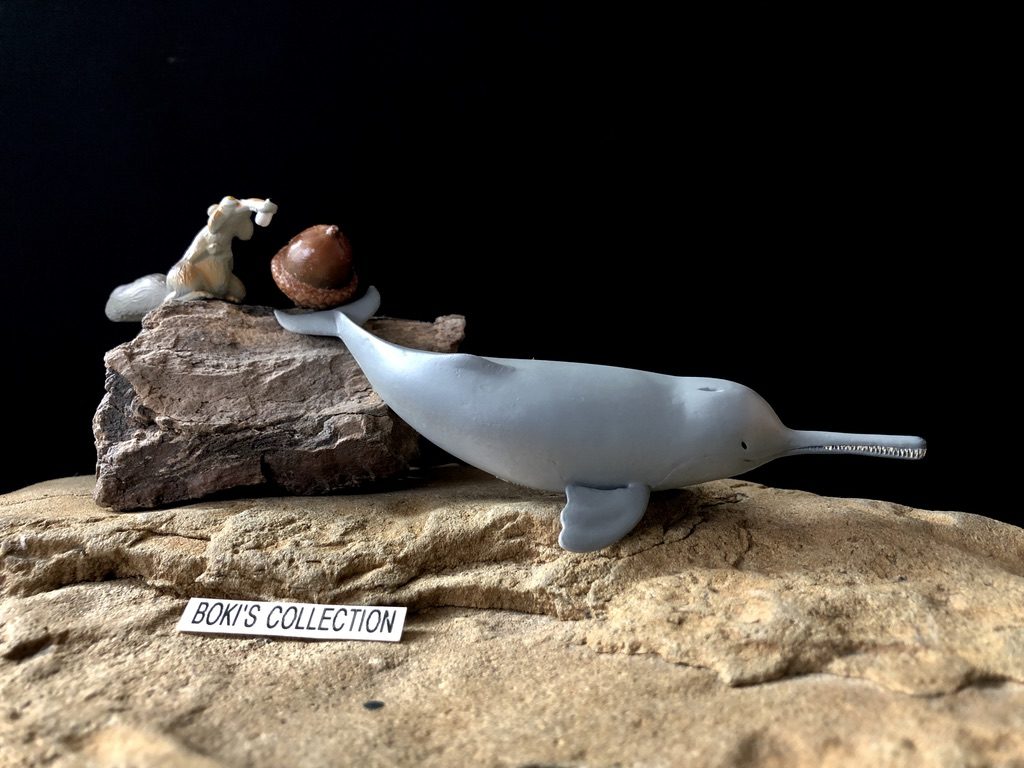
Well, that concludes our review, I hope that you like it. Thanks for reading, I hope that you will join me next time as we continue meeting some of our planet’s most fascinating animals.
Take care, cheers!
Disclaimer: links to Ebay and Amazon on the AnimalToyBlog are affiliate links, so we make a small commission if you use them. Thanks for supporting us!




Wonderful contribution! I have this figure too. Most of my dolphins are from the Safari TOOB, since I like TOOB-sized dolphins along standard-sized whales, but this figure was a given!
It’s a nice figure but it does have a significant flaw with it. The tail is far too small. Ganges River Dolphins have fairly large tails and the one on the Collecta figure is quite small. It’s very noticeable when you look at photos of the real animal. I’m not sure how Collecta made such an error.